From the Diamond to the Clinic: How ForceFrame Training Mode is changing the game
Available in:
EN
Matt Witt is a Doctor of Physical Therapy and Business Development Manager at VALD. Previously, Matt worked as a Performance Physical Therapist with the New York Mets. Here, he gained an appreciation for using VALD systems as staples in his rehabilitation process and has a unique insight into how they are implemented in elite sports.
In this article, Matt shares his insights into ForceFrame “Training Mode” – a feature he recognizes as having untapped potential in both clinical practice and performance settings.
What does Training Mode in ForceFrame offer that traditional assessments don’t?
When assessing athletes, the performance department is tasked with determining the physical qualities necessary for an individual to perform their sport. When an injury occurs, determining what performance quality is affected and how to restore it is paramount for the medical team. Each muscle quality requires a specific training emphasis with training variables crafted around that goal.
This is where Training Mode is perfect. With Training Mode, clinicians can precisely and objectively dose the training load to match the muscle quality they need to improve in the patient.
With Training Mode, clinicians can precisely and objectively dose the training load to match the muscle quality they need to improve in the patient.
Gone are the days of guessing how much load the athlete can handle and how much to progress from session to session. Training Mode gives you the ability to provide an objective dose to every set and rep the athlete performs. Coaches and clinicians can create custom programs, prescribing sets, reps, intensity, duration and rest periods, receiving objective feedback on overall athlete performance via the “time in zone” and “variance” metrics. These metrics provide exercise professionals with the information they need to make the next steps in their exercise selection.
With the ForceFrame, you can prescribe an objective dose of:
- Sets
- Reps
- Intensity (Thresholds = range of contraction intensity)
- Duration
- Rest Periods
How can training and testing modes work together?
Baseline and serial max strength testing are extremely common within professional baseball. Teams can generate their own athlete norms for the tests they use and benchmark their athletes for each test. Testing also allows performance departments to identify strength changes in season, allowing them to monitor how athletes are responding to the stressors of repetitive gameplay. Once ideal thresholds of strength are determined, clinicians can use Training Mode to build and incorporate those thresholds into the athlete training plan.
For example, teams will test their pitchers’ dominant shoulder external rotation (ER) and internal rotation (IR) strength during Spring Training and at various points throughout the season. For pitchers, a common in-season adaptation is a loss of ER strength and an increase in IR strength, as identified through serial testing.
For pitchers, a common in-season adaptation is a loss of ER strength and an increase in IR strength, as identified through serial testing.
A goal of the performance department may be to reduce the amount of ER strength that is lost during the season. Using ForceFrame’s Training Mode, performance practitioners can create a training plan that individualizes the force threshold at a certain percentage of that athlete’s max test and corresponds to the sets, reps and rest scheme to match what is needed to develop strength.
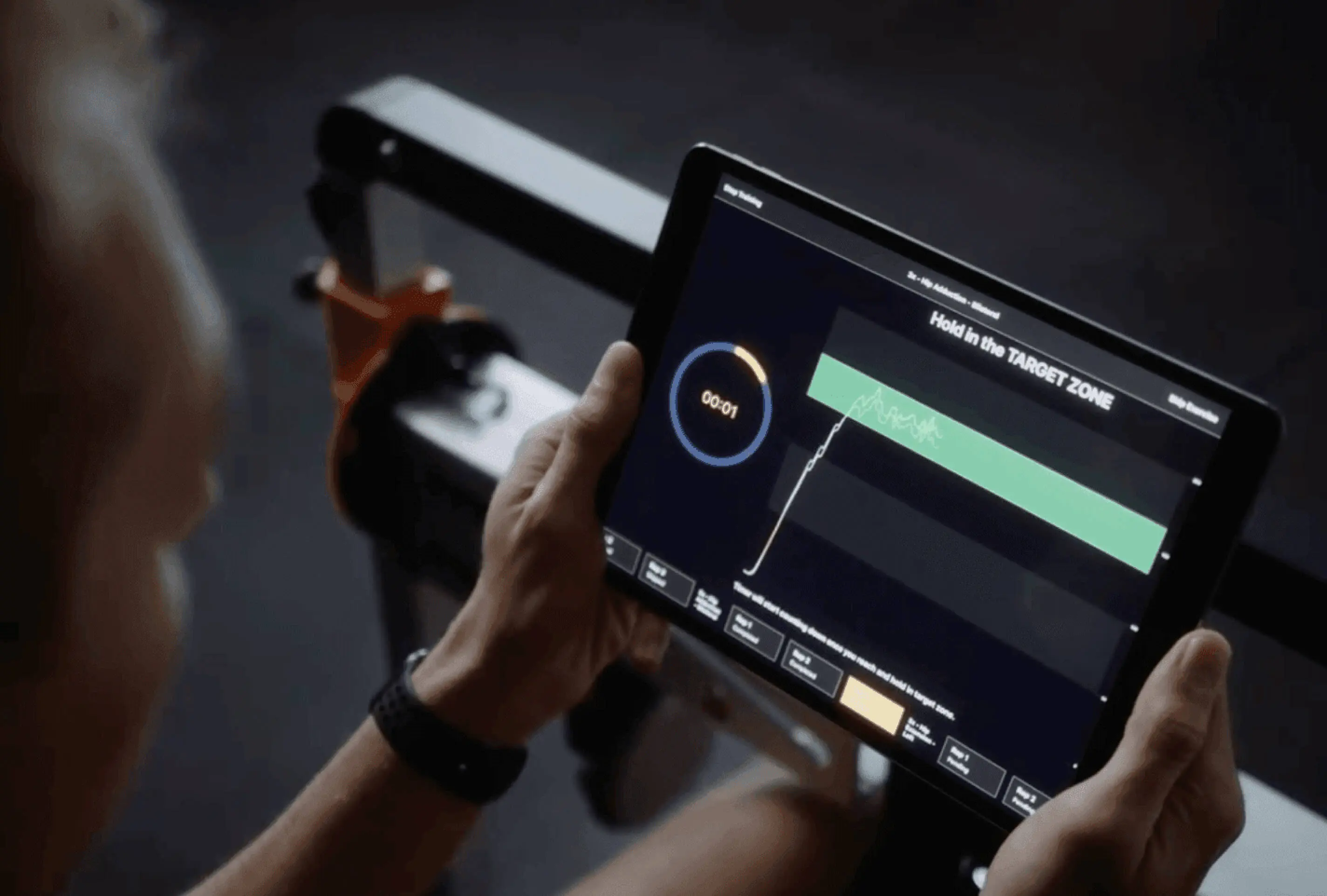
Does Training Mode fit best within a particular performance or health setting?
Clinically, you can use isometric training in a variety of ways. While individuals like Alex Natera have popularized isometric training for performance characteristics, it is still a widely used method to provide a pain-relieving effect in a variety of musculoskeletal conditions; many of which are extremely common amongst elite baseball athletes.
Hamstring injuries remain the most common pathology in baseball year after year and for both muscle strains and tendinopathies, isometric loading is widely recommended. The ForceFrame allows clinicians to customize the position to the athlete and their injury. In the MLB, we would commonly set up knee-dominant hamstring training and load as appropriate for the stage of injury, as these distal-medial injuries were quite common.
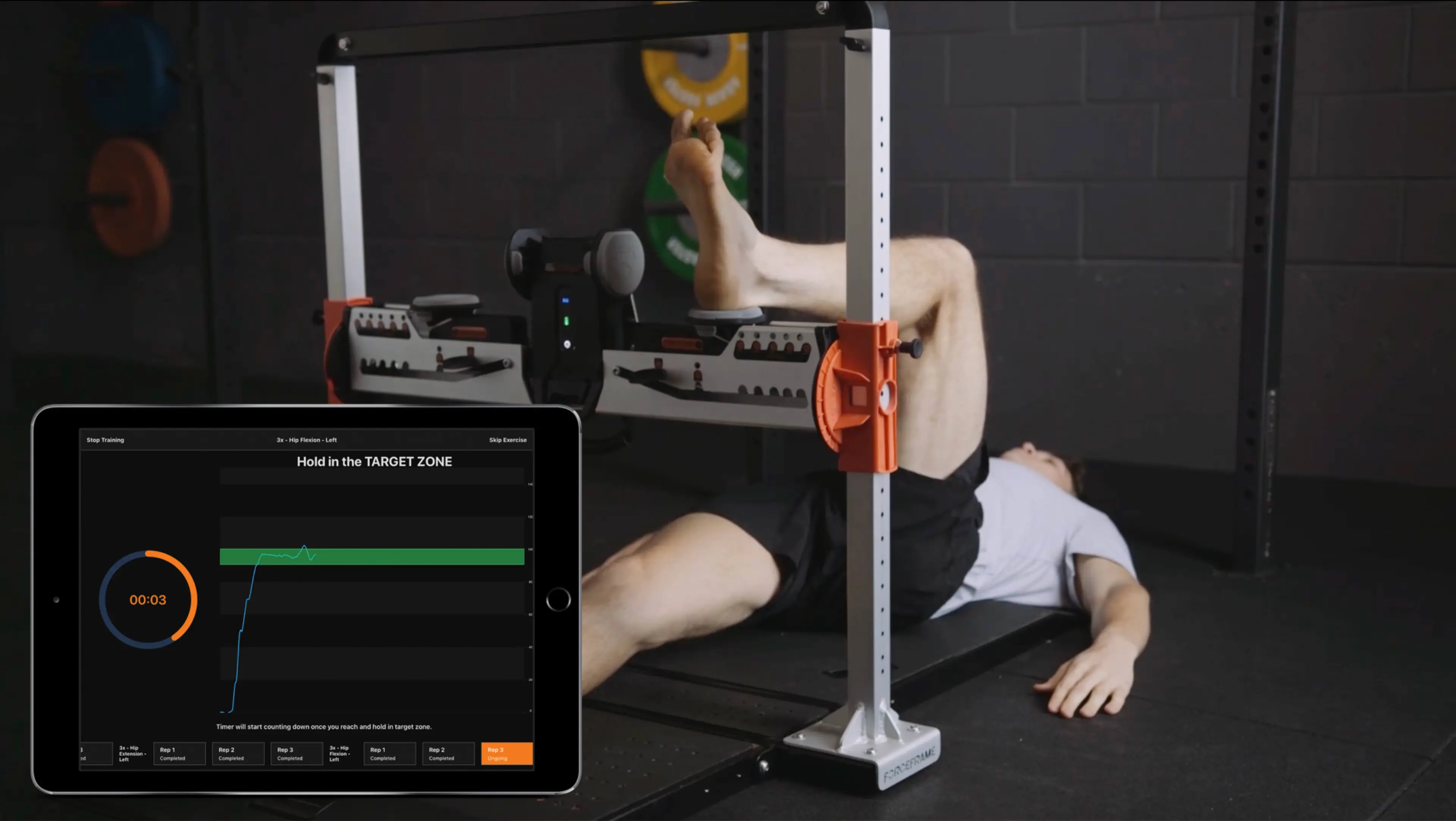
Another common complaint is patellar tendon pain in pitchers due to the high demand on the lead leg while decelerating the body off the mound. Knee extension training at low loads and long durations can allow athletes to manage their discomfort before and after outings.
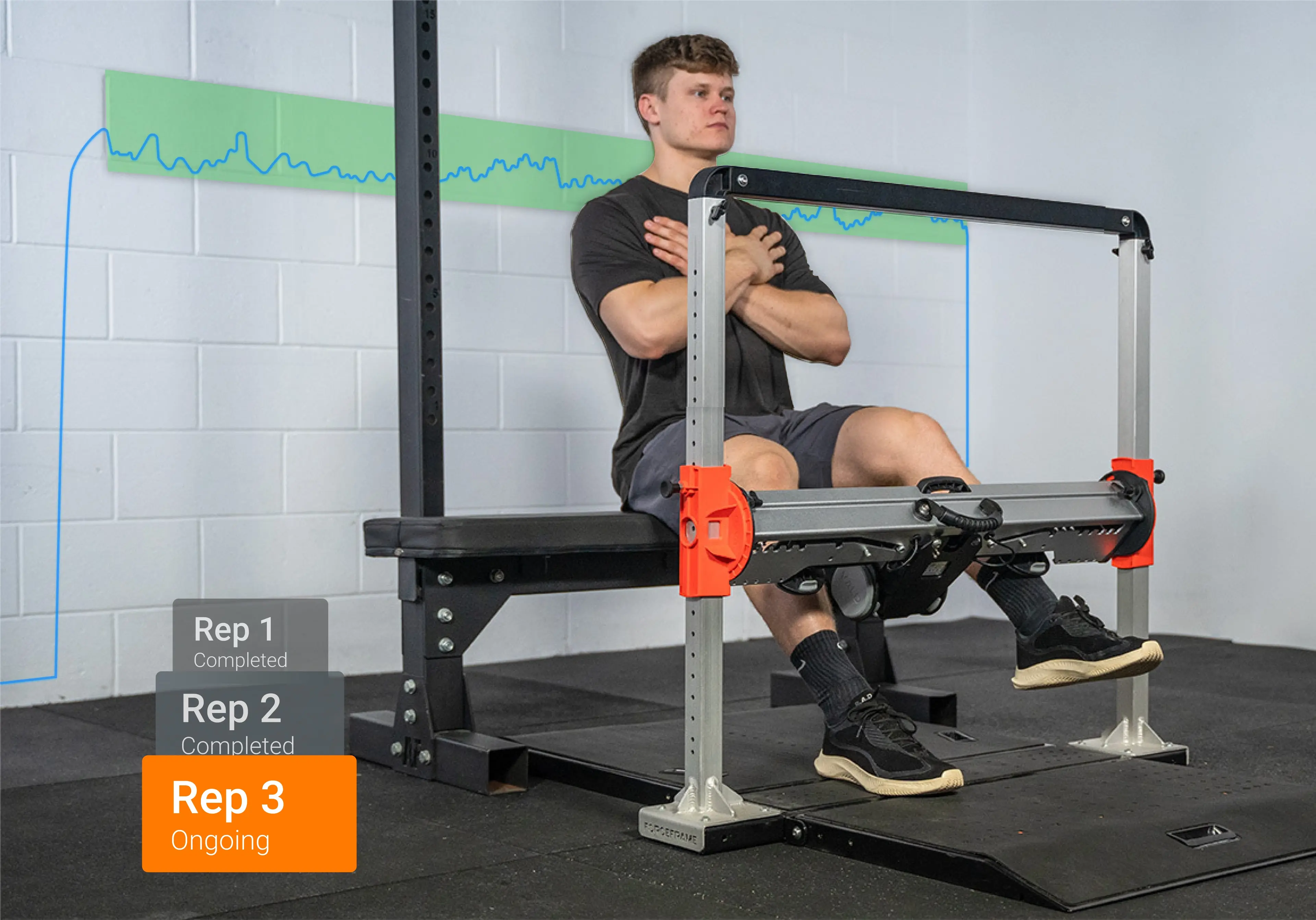
For healthy athletes, using Training Mode became part of their daily routine. Low load and long duration isometrics (15-20% x 90-120 seconds) were used by pitchers as a part of their pre-throw “activation”. Athletes had the freedom to adjust their parameters, within reason, to their preference; this granted a degree of autonomy and helped tremendously with athlete buy-in. The more comfortable they became with daily activation and training, the less resistance there was when it came to testing. Getting athletes bought into testing is a huge benefit of ForceFrame’s Training Mode.
Athletes had the freedom to adjust their parameters... The more comfortable they became with [ForceFrame] the less resistance there was when it came to testing. Getting athletes bought into testing is a huge benefit of ForceFrame’s Training Mode.
What are some conditions or injuries where you would use Training Mode?
Injuries such as tendon tears around the shoulder complex are common in pitchers. These can follow either a surgical or conservative route. In both pathways, Training Mode can play an important role in ensuring the accuracy of dosage in rehab.
Being able to control both the position of the shoulder as well as the dosage adds an additional level of confidence to ensure that we are prescribing the “safe maximum” stimulus.
Using an example of a conservative rehabilitation (as decided by the medical team in conjunction with the athlete) of a partial tendon tear we can explore some possible exercises and progressions.
Early / Acute / Protected Phase
- Specialist restrictions – no more than 30% contraction intensity.
- Low-intensity isometrics.
- Position – inner range (e.g., arm by side).
- Dosage – 10-20% threshold.
- Duration – a few seconds at a time, using comfort as a guide.
As the athletes progress through this phase, regular testing can determine what a consistent 20% effort is. As this stabilizes and is well tolerated, the progression of exercises could be to:
- Position – inner range (e.g., arm by side).
- Dosage – 30%.
- Duration – 60-90 seconds.
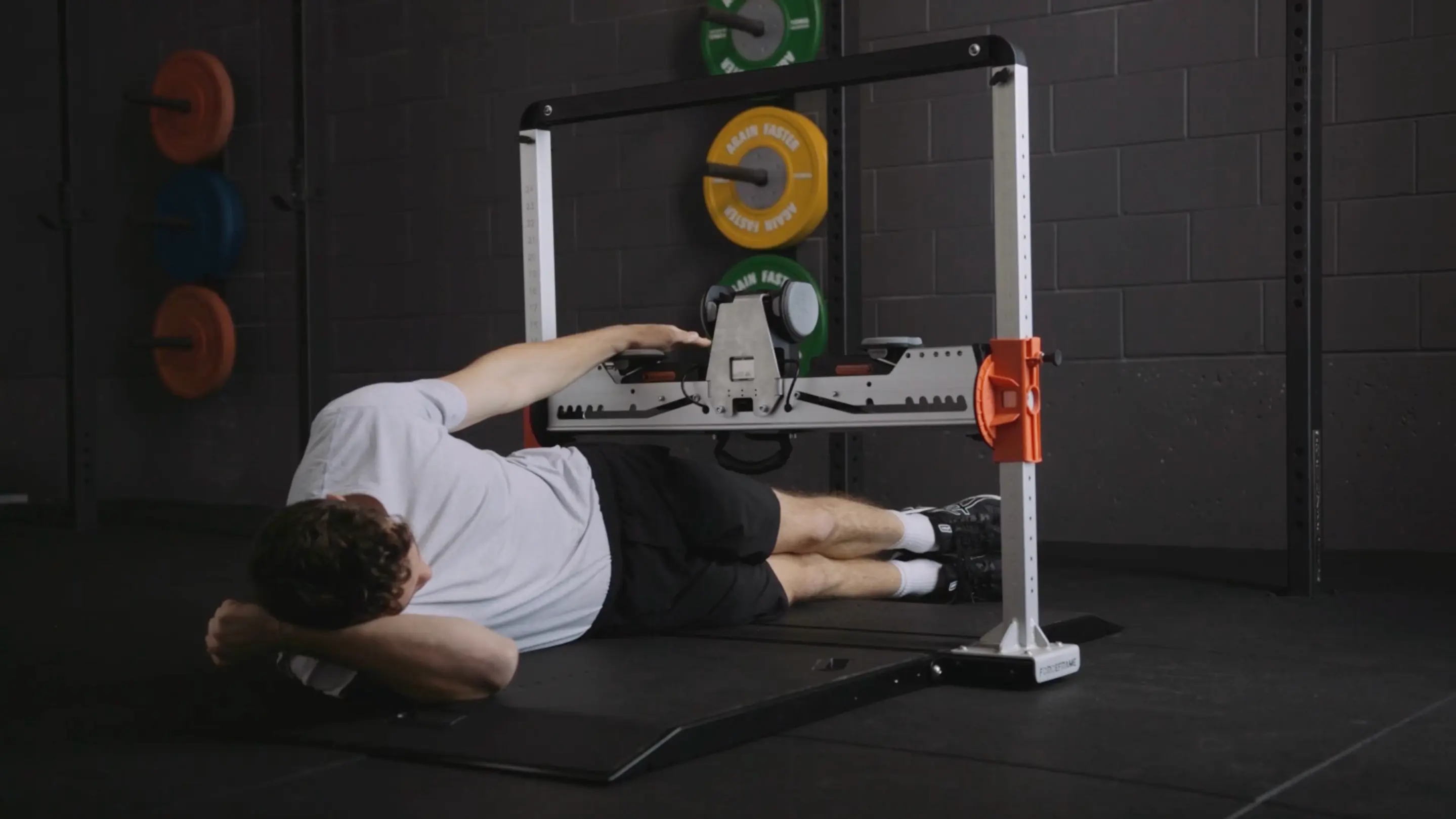
Unprotected Phase
- Specialist restrictions – can progress outside of protected range and gradually increase intensity.
- Moderate to high-intensity isometrics.
- Position – inner range (e.g., arm by side) – gradually progressing to outer range (e.g., end of range flexion).
- Dosage – progressively building up to 70-80% for 3-5 seconds.
- Duration – 5-10 seconds, reducing as intensity increases.
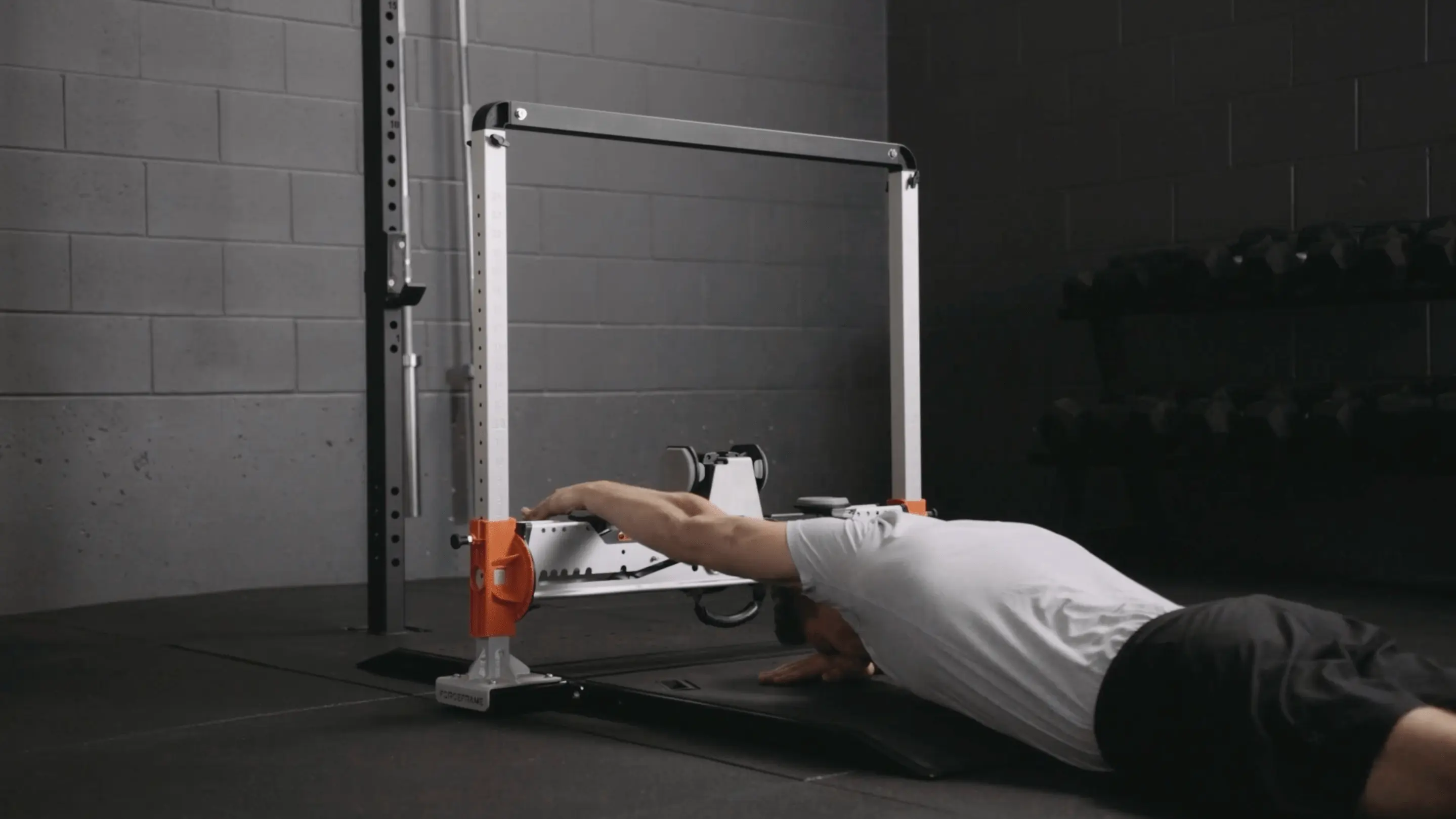
In example cases like this, Training Mode plays a crucial role in tracking how the athlete progresses. With the time in zone and variance feedback, we can gather objective information on how they are able to perform the training within set parameters to progress and regress accordingly. Occasionally, training performance may decrease unexpectedly. This can indicate the need to dial back the intensity or volume and shift our priorities towards recovery before progressing to greater intensities. Training Mode allows practitioners to zero in and find the “Goldilocks dose” of load an athlete needs on each day to progress towards our goal.
Training Mode allows practitioners to zero in and find the “Goldilocks dose” of load an athlete needs on each day to progress towards our goal.
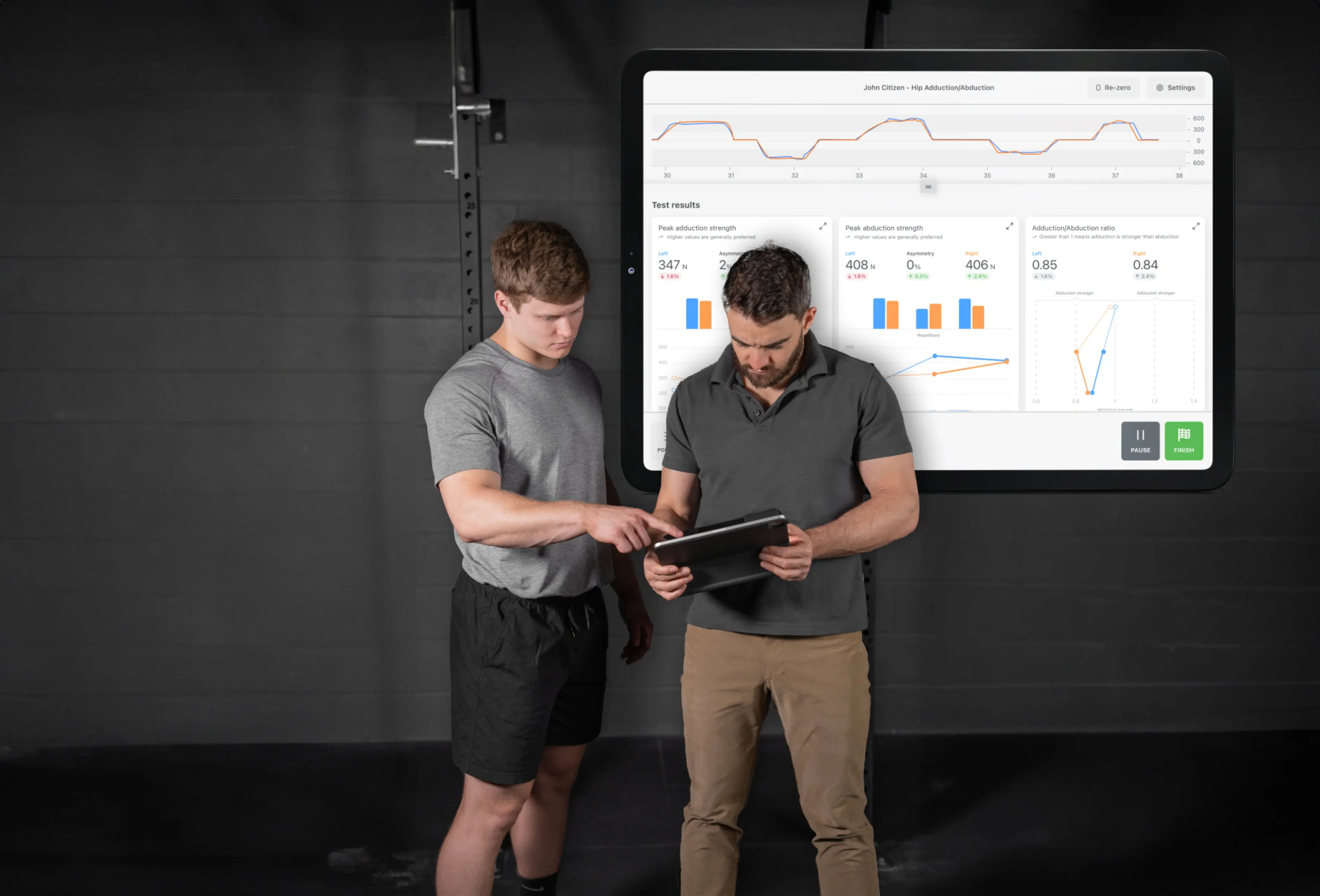
In cases where there is successful conservative rehabilitation and pitchers are able to return to the mound, Training Mode can become part of their daily activation routine and maintenance plan as they continue their season.
How else has Training Mode enhanced your athletes' experiences?
When the iPad gets brought out and the threshold is set, the athletes get excited and stay engaged to keep their force output within the threshold. It becomes a fun game that is a cornerstone of a quality rehab session. Training Mode is a tool clinicians can use to keep their patients bought into their plan of care and completing scheduled visits.
What about the clinicians working in the clinic? What advantages does Training Mode give them?
Once clinicians see how quick and easy Training Mode is to set up and the amount of insight they gain, they always lean into using it more with their patients. The ForceFrame has become a staple for objective measurement collection and quality training stimuli.
I have the belief that clinicians are well intended – we all recognize the need to “load our patients more” to provide a higher training stimulus than what has traditionally been done. Training Mode can give you that peace of mind. Setting force thresholds, sets, reps and rest periods within a few seconds allows clinicians to spend more time with the patient and less time in front of the computer. Best of all, you know the patient is getting a quality training stimulus.
Training Mode has been a game changer for clinicians’ load monitoring processes.
By combining data from Training Mode and other patient values (ROM, edema, subjective response, outcome measures, etc.) clinicians can begin monitoring the patient’s physiological response to their plan of care. Being dialled in to how the patient responds to certain parameters of training allowed clinicians to categorize “well-tolerated” and “poorly tolerated” sessions.
Training Mode has been a game changer for clinicians’ load monitoring processes.
If you would like to know more about ForceFrame’s Training Mode or how VALD solutions can assist you in your organization, please get in touch.
